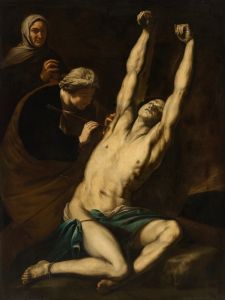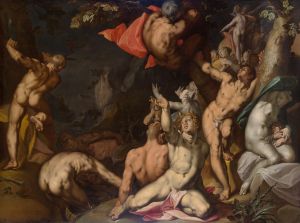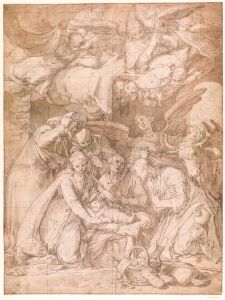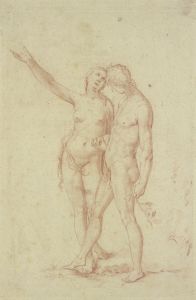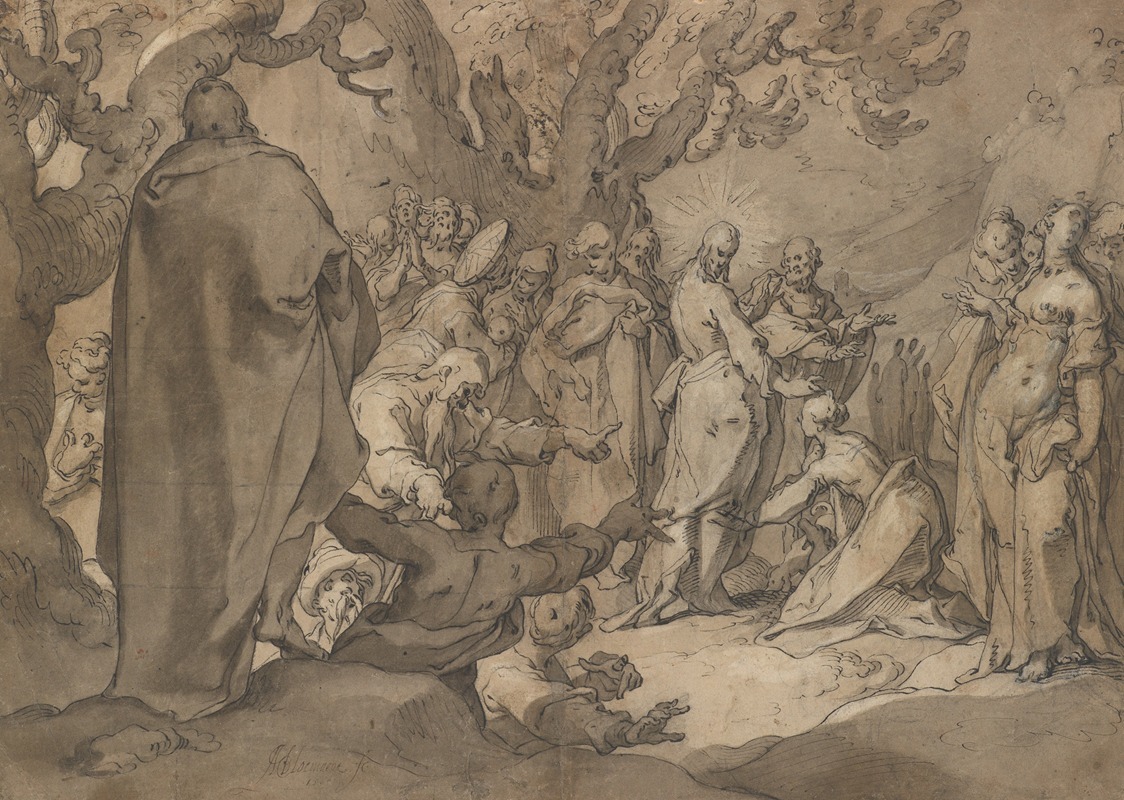
Christ and the Canaanite Women
A hand-painted replica of Abraham Bloemaert’s masterpiece Christ and the Canaanite Women, meticulously crafted by professional artists to capture the true essence of the original. Each piece is created with museum-quality canvas and rare mineral pigments, carefully painted by experienced artists with delicate brushstrokes and rich, layered colors to perfectly recreate the texture of the original artwork. Unlike machine-printed reproductions, this hand-painted version brings the painting to life, infused with the artist’s emotions and skill in every stroke. Whether for personal collection or home decoration, it instantly elevates the artistic atmosphere of any space.
"Christ and the Canaanite Woman" is a painting by the Dutch artist Abraham Bloemaert, created in the early 17th century. Bloemaert, born in 1566 and died in 1651, was a prominent painter and printmaker of the Dutch Golden Age. He is known for his versatility in various artistic styles, including Mannerism and Baroque, and for his influence on the Utrecht Caravaggisti.
The painting depicts a scene from the New Testament, specifically from the Gospel of Matthew (Matthew 15:21-28) and the Gospel of Mark (Mark 7:24-30). The story involves a Canaanite woman who approaches Jesus Christ, pleading for him to heal her demon-possessed daughter. Despite initial reluctance, Jesus commends her faith and grants her request, healing her daughter.
In "Christ and the Canaanite Woman," Bloemaert captures the emotional intensity of the encounter. The composition typically features Jesus and his disciples, with the Canaanite woman kneeling or standing in a pleading posture. The expressions and gestures of the figures are designed to convey the drama and the woman's desperation, as well as Jesus's eventual compassion.
Bloemaert's use of light and color in this painting reflects his mastery of the Baroque style, characterized by dramatic contrasts and a focus on the human figure. The artist's attention to detail is evident in the rendering of the characters' clothing and the naturalistic depiction of their surroundings. The painting also showcases Bloemaert's skill in creating a sense of depth and movement within the composition.
Abraham Bloemaert was a significant figure in the Dutch art scene, and his works were highly regarded during his lifetime. He was a founding member of the Utrecht Guild of Saint Luke and played a crucial role in the development of the Utrecht school of painting. Bloemaert's influence extended to his students, including notable artists such as Gerard van Honthorst and Hendrick Terbrugghen.
"Christ and the Canaanite Woman" is an example of Bloemaert's ability to blend religious themes with the artistic innovations of his time. The painting is part of the collection of the Rijksmuseum in Amsterdam, which houses an extensive array of Dutch Golden Age artworks. The museum's collection provides valuable insights into the cultural and artistic heritage of the Netherlands during this period.
In summary, "Christ and the Canaanite Woman" by Abraham Bloemaert is a significant work that exemplifies the artist's skill in depicting biblical narratives with emotional depth and technical proficiency. The painting remains an important piece within the context of Dutch Golden Age art and continues to be appreciated for its historical and artistic value.











